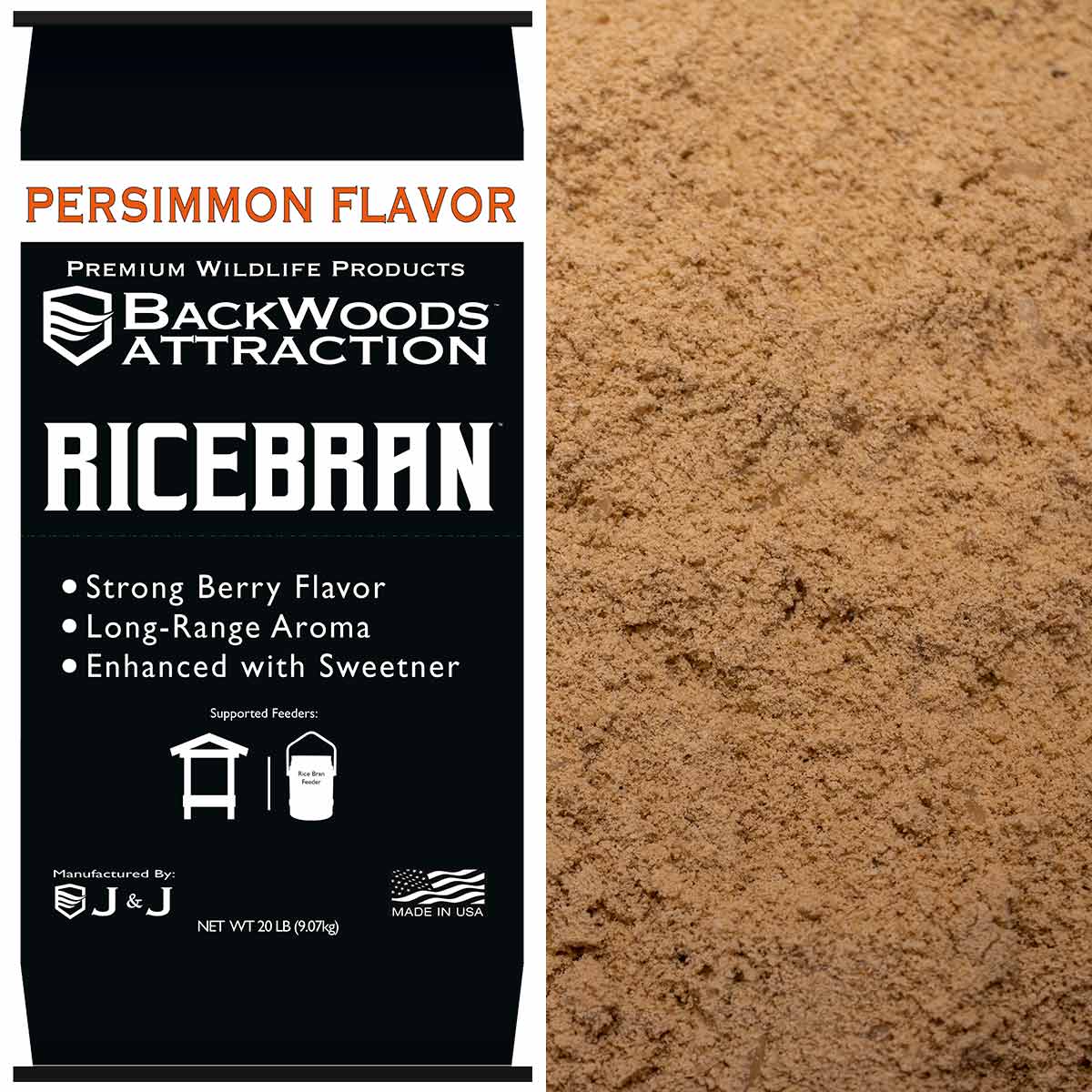RICE BRAN
Backwoods® Rice Bran is a highly beneficial feed derived from the outer layer of the rice grain, offering a potent mix of protein, fat, and carbohydrates. This composition makes it an exceptionally nourishing food choice for deer, bolstered by a wealth of essential vitamins and minerals. The inclusion of Rice Bran in a deer's diet can lead to notable health improvements, such as enhanced digestion, a boost in energy levels, and overall superior health. Its sweet aroma acts as a natural attractant, drawing deer to your location with ease. By integrating Regular Rice Bran into your wildlife management strategy, you're not just feeding deer; you're investing in their health and vitality, making it a standout choice for land managers and hunters alike.
Only Available At Your Local Farm Store
Couldn't load pickup availability
Palatability: Deer are naturally attracted to the taste and texture of rice bran, making it an effective attractant to keep them coming back to your feeding sites.
Nutrient-Rich: Packed with essential nutrients, rice bran offers a balanced mix of vitamins and minerals that contribute to overall health, growth, and antler development in deer.
Digestibility: The nutrients in rice bran are highly digestible, ensuring that deer efficiently absorb the energy and nutrients needed for optimal health and performance.
Supplemental Feeding: Rice bran can be used as a supplement to other feeds, enhancing the nutritional value of your overall feeding program and ensuring deer receive a well-rounded diet.
Ease of Use: Rice bran is easy to handle and can be spread directly on the ground, fed in a rice bran or trough-style feeder, or mixed with other feeds, making it a versatile and convenient option for wildlife managers and hunters alike.
| Min | Max | |
| Crude Protein | 12% | |
| Crude Fat | 12% | |
| Crude Fiber | 12% |
Feeding Method: Offer Rice Bran free-choice, allowing deer to consume as needed based on their dietary requirements.
Quality Check: Always inspect the Rice Bran before feeding. DO NOT use if you find signs of mold or infestation by insects to protect the health and safety of the wildlife.










